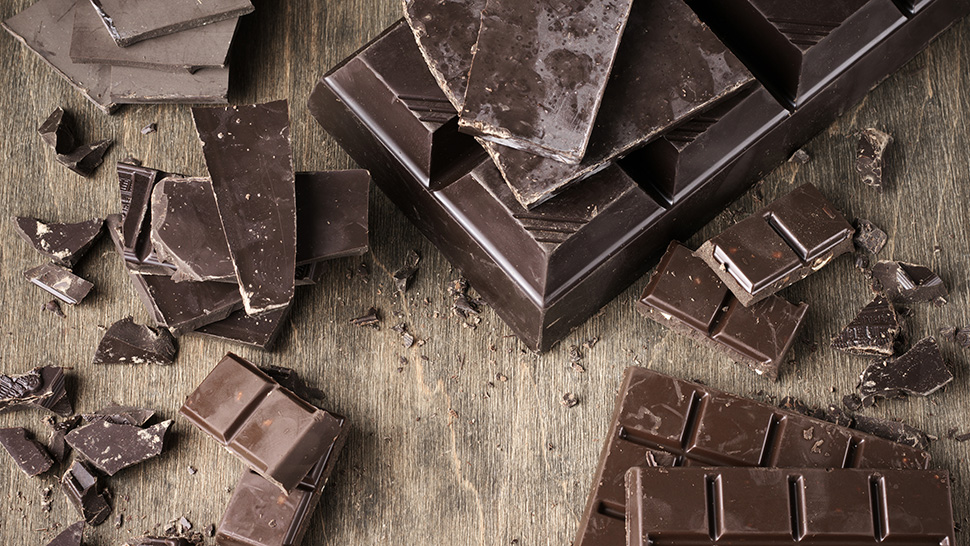
Is dark chocolate actually good for you? How do I know which type to choose and how much is healthy to eat?
That sweet, creamy, melty, rich flavor of chocolate — there’s nothing quite like it. It can be tempting to grab a bar (or three) from the office candy bowl or seemingly endless aisle of chocolate bars (who knew there could be so many types and flavors of chocolate?). And yes, it’s true that dark chocolate — which is made from cocoa powder— contains compounds that may play a beneficial role in health, is often lower in sugar than milk chocolate, and can be a healthy dessert choice.
But before indulging in a chocolate treat after every meal, there are a few things you should know about choosing a dark chocolate.
Chocolate is typically made from a mix of cocoa powder, sugar, and a source of fat, which may come from cocoa butter, milk, coconut oil, or another source. Chocolate is typically labeled based on its percentage of cocoa powder — the higher the better. That’s because cocoa powder in its natural, unprocessed, and unsweetened form is very high in flavonoids, a type of antioxidant that’s been linked to a variety of health benefits such as lower blood pressure, improved cognition, and better blood sugar control in people with diabetes.
However, here’s the bittersweet truth: while chocolate, particularly dark chocolate, contains flavonoid-rich cocoa powder, it’s probably a stretch to call chocolate a “health food.” The amount and potency of flavonoids in cocoa powder is significantly decreased once the cocoa solids are processed, as they are when they are turned into the sweet confectionary treats we know and love. If you’ve ever tasted natural cocoa (or cacao — they are essentially the same thing) powder, you know that it is very bitter, which is why it is often processed through fermentation and roasting to deepen the flavor and cut some of the bitterness. This process destroys some of the flavonoids and takes the cocoa powder from a high antioxidant but bitter powder to a low antioxidant sweet treat.
Though the flavonoid amount in dark chocolates varies, it’s still a healthier choice than milk chocolate, as dark chocolate usually contains less added sugar and does not contain the milk fats that give milk chocolate it’s lighter and creamier flavor. Choose dark chocolate with a higher cocoa percentage — look for 70% or higher — for more antioxidants and less fat and sugar. You can also look for dark chocolate that contains natural cocoa instead of Dutch-processed — a signal that it’s lower in antioxidants.
Finally, keep serving sizes in mind when enjoying dark chocolate. Because let’s be honest, it is still a food that is high in calories, sugar, and fat. Enjoy a 1-ounce serving (approximately 50 regular-size chocolate chips) and do so mindfully, so you get the full benefit of slowing down and savoring a treat. Want to learn how to eat more mindfully? Here’s an exercise you can try. And yes, it involves tasting chocolate.
At Bon Appétit, we know there’s a lot on your plate that you worry about. That’s why we have a team of registered dietitian nutritionists ready to answer your nutrition questions about which food choices will help you avoid unwanted pounds, work or study (and sleep!) better, and form long-lasting healthy eating habits. Email your questions and feedback to nutrition@cafebonappetit.com.